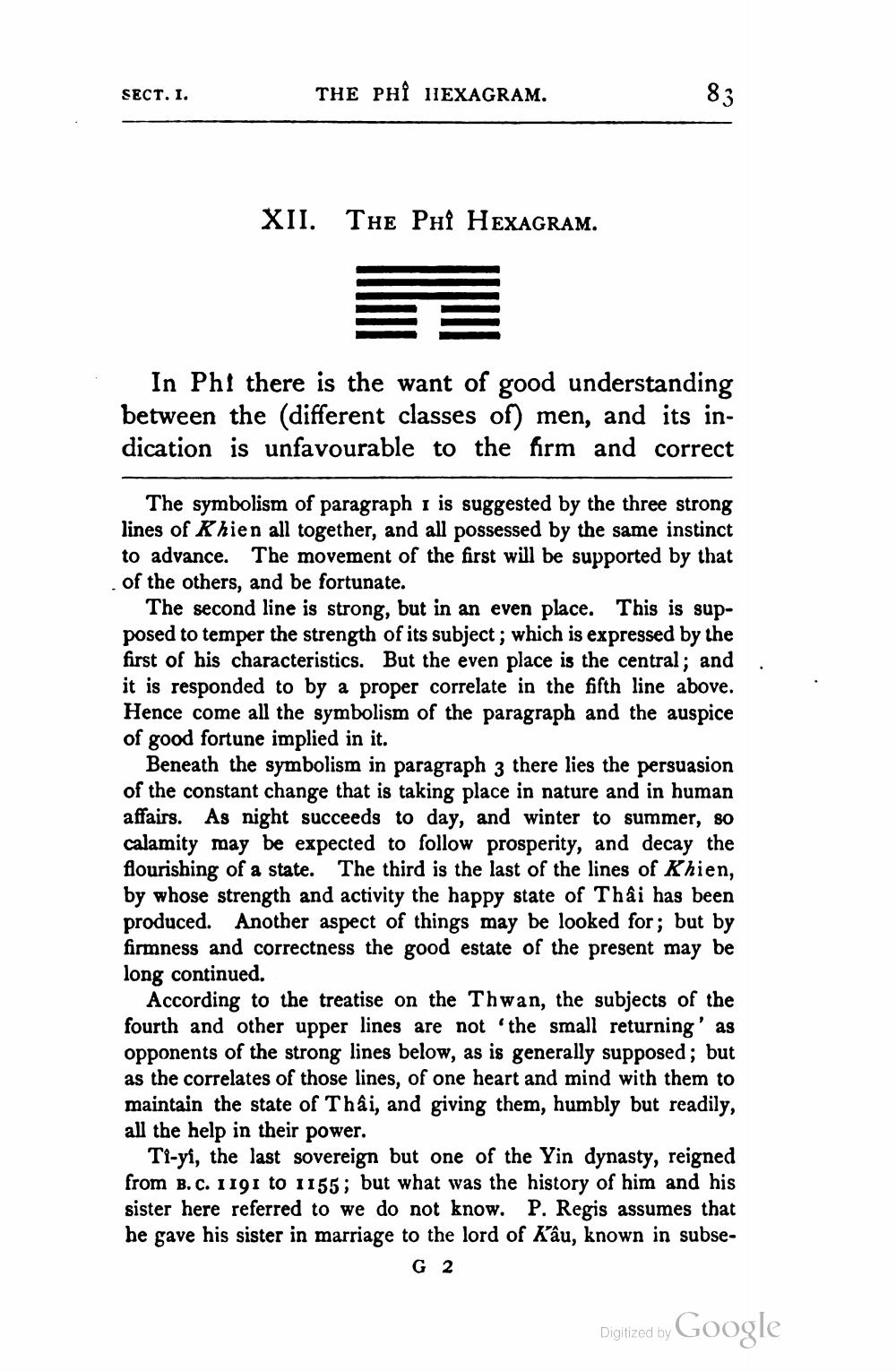________________
SECT. I.
THE PHÍ HEXAGRAM.
XII. THE Phi HEXAGRAM.
In Pht there is the want of good understanding between the (different classes of) men, and its indication is unfavourable to the firm and correct
The symbolism of paragraph 1 is suggested by the three strong lines of Khien all together, and all possessed by the same instinct to advance. The movement of the first will be supported by that of the others, and be fortunate.
The second line is strong, but in an even place. This is supposed to temper the strength of its subject; which is expressed by the first of his characteristics. But the even place is the central; and it is responded to by a proper correlate in the fifth line above. Hence come all the symbolism of the paragraph and the auspice of good fortune implied in it.
Beneath the symbolism in paragraph 3 there lies the persuasion of the constant change that is taking place in nature and in human affairs. As night succeeds to day, and winter to summer, so calamity may be expected to follow prosperity, and decay the flourishing of a state. The third is the last of the lines of Khien, by whose strength and activity the happy state of Thãi has been produced. Another aspect of things may be looked for; but by firmness and correctness the good estate of the present may be long continued.
According to the treatise on the Thwan, the subjects of the fourth and other upper lines are not the small returning' as opponents of the strong lines below, as is generally supposed; but as the correlates of those lines, of one heart and mind with them to maintain the state of Thai, and giving them, humbly but readily, all the help in their power.
Ti-yi, the last sovereign but one of the Yin dynasty, reigned from B.C. 1191 to 1155; but what was the history of him and his sister here referred to we do not know. P. Regis assumes that he gave his sister in marriage to the lord of Kâu, known in subse
G2
Digitized by Google




